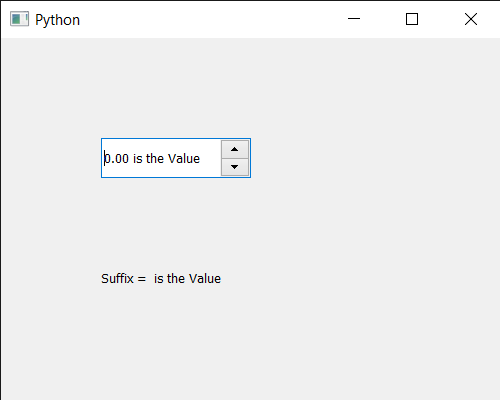PyQt5 QDoubleSpinBox – 获取步骤类型属性
在这篇文章中,我们将看到如何获得QDoubleSpinBox的阶梯类型属性。这个属性持有步长类型。步进类型可以是单步或自适应小数步。默认情况下,当我们改变数值时,它将以整数而不是小数点的方式改变,尽管我们可以在步骤类型属性的帮助下改变这一点,它可以在setStepType方法的帮助下被设置。
为了做到这一点,我们将使用QDateTimeEdit对象的stepType方法。
语法: dd_spin.stepType()
参数: 它不需要参数
返回: 它返回步骤类型对象,但在打印时显示与之相关的值。
以下是实现方法
# importing libraries
from PyQt5.QtWidgets import *
from PyQt5 import QtCore, QtGui
from PyQt5.QtGui import *
from PyQt5.QtCore import *
import sys
class Window(QMainWindow):
def __init__(self):
super().__init__()
# setting title
self.setWindowTitle("Python ")
# setting geometry
self.setGeometry(100, 100, 500, 400)
# calling method
self.UiComponents()
# showing all the widgets
self.show()
# method for components
def UiComponents(self):
# creating double spin box
d_spin = QDoubleSpinBox(self)
# setting geometry to the double spin box
d_spin.setGeometry(100, 100, 150, 40)
# step type
step_type = QAbstractSpinBox.AdaptiveDecimalStepType
# adaptive step type
d_spin.setStepType(step_type)
# creating a label
label = QLabel("GeeksforGeeks", self)
# setting geometry to the label
label.setGeometry(100, 200, 300, 80)
# making label multi line
label.setWordWrap(True)
# getting step type
value = d_spin.stepType()
# setting text to the label
label.setText("Step Type : " + str(value))
# create pyqt5 app
App = QApplication(sys.argv)
# create the instance of our Window
window = Window()
# start the app
sys.exit(App.exec())
输出 :

 极客教程
极客教程